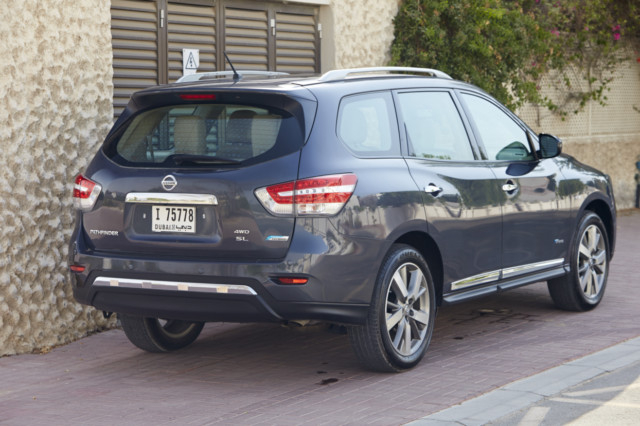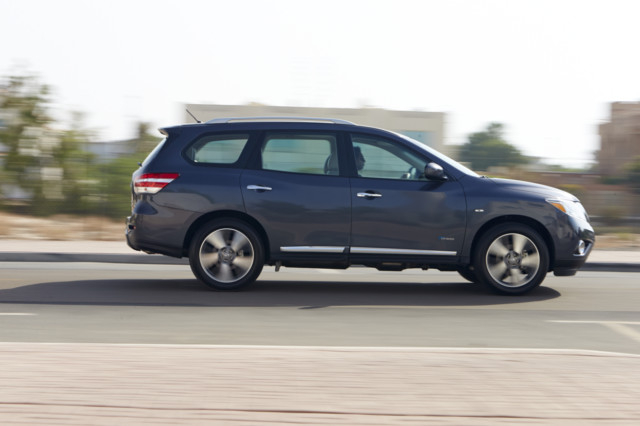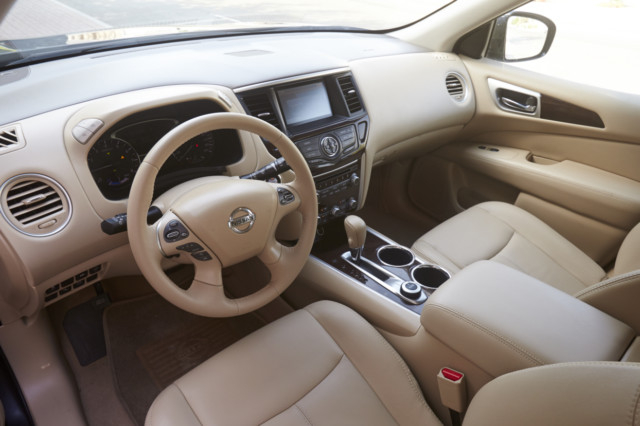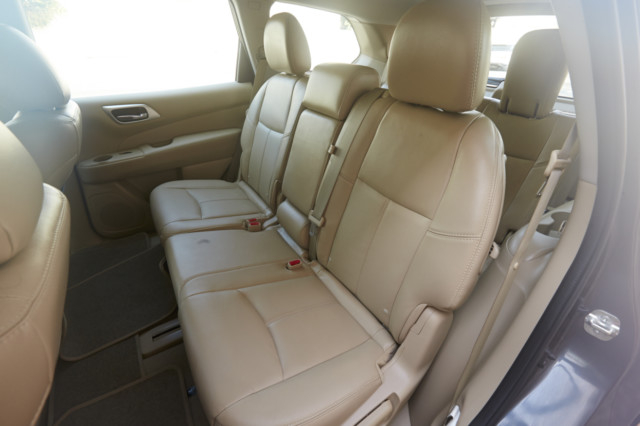
The first-generation Pathfinder was a rugged vehicle fully deserving of the name. It could literally find a path when you were out in the rough and was a tough, no-nonsense sort of SUV. It laughed in the face of fuel economy. That wasn’t on the top of its priorities in the mid-Eighties. But as time went by and trends began to change, it became more and more civilised. It isn’t even considered an SUV anymore.
This fourth-generation hasn’t been around very long and I’m still to be convinced by it. Visually, it’s lost that edge of old. The angular body made way for a rounder exterior and you’d probably wipe that smile from the grille if you dared venture off-road. It gives off that sort of vibe, like it’d prefer the grocery or school run. Backing up that claim is the fact that first Nissan saddled it with a CVT, and now it’s made it a hybrid.
Has adding efficiency diminished driving enjoyment? I’m afraid so. The hybrid powertrain is sluggish in and around town but find an empty stretch and hammer the throttle and the Pathfinder moves pretty quickly.
The 2.5-litre supercharged four-cylinder has a fair amount of thrust and, combined with the electric motor (paired to a compact Lithium-ion battery), produces a total of 250bhp.
That’s almost as much as the old 3.5-litre V6, which only had four horses more. Downsizing hasn’t affected power much and even though the extra hardware adds unwanted weight, to its credit this doesn’t translate on the road. It feels light for a four-wheel drive, seven-seater.
The weight distribution helps. The Li-ion battery has been placed towards the back under the third-row seat, which gives the Pathfinder a good balance. However, the hybrid system that manages power from both the electric and the petrol motor isn’t as smooth as it could be.
The anchors feel grabby — possibly because the system is eager to get as much energy from the regenerative braking as it can. You get used to it but not the steering (hydraulic electric power-assisted), which ought to have come wrapped in leather or suede — anything but slippery plastic.
You have to hold it tight when manoeuvring, otherwise it’ll slip out of your hands. Worse is the seemingly delayed start-up action. You push the start button but there’s not a sound from the engine until two seconds later when you get a ‘beep’ and then the four-pot awakens. You’ll be stabbing away at that button; no, you don’t have a flat battery, it’s just the way the system works — slowly.
On its own, the four-pot is good for 230bhp and though the electric motor brings that tally up by 20 horses, it feels a bit like a bolt-on job. Why is it even there? Ah yes, efficiency. Nissan claims this CUV now has a fuel economy of 9.0 litres per 100km combined — a 30 per cent improvement compared to the standard Pathfinder.
Impressive, as is the range offered when you fill it up all the way. Top the 74-litre tank to the brim and you can drive for an estimated 785km. But would you really want to? Had it been a manual or, heck, a six-speed slush ’box, then yes.
But Nissan has stuck that continuously variable transmission in there, and like the other models burdened with this gearbox, the Pathfinder, too, moans and groans like it’s stuck in first. CVTs are the transmission of choice for most hybrids as they help reduce fuel consumption, but I just wish the technology sounded better. How about channelling in some fake engine noise through the speakers like BMW? Anything to drown out that annoying drone.
The intuitive all-mode 4x4-i system lets you choose full-time two-wheel drive for maximum fuel economy, auto mode to automatically monitor conditions and adjust the balance of power between front and rear wheels or four-wheel-drive lock mode if you fancy a spot of off-roading. Not that the Pathfinder will be happy about getting its wheels dirty. School run only, remember.
Not a whole lot of effort has been made in distinguishing this hybrid other than a set of redesigned and full-LED taillights and the obligatory exterior badging on the swoopy body.
The interior gets a hybrid system information screen added to the instrument panel and the intuitive 4.2in colour monitor shows power output readings from the electric and petrol motors and how much power is being regenerated and fed back into the battery. The graphics are neat and might keep the kids entertained while the EZ Flex Seating System allows easy access to the last row.
On the whole, the cabin is airy, comfortable and well appointed and though it might be better on fuel and has similar power to the V6, this hybrid just isn’t as good to drive and it’s because of the whizbangery. Its personality has been altered by that electric shock and you’ll be in for one too; it’s yours for approximately Dh150,000, which makes it a very good deal. Just don’t drive it...
This story first appeared on wheels in September 2014















